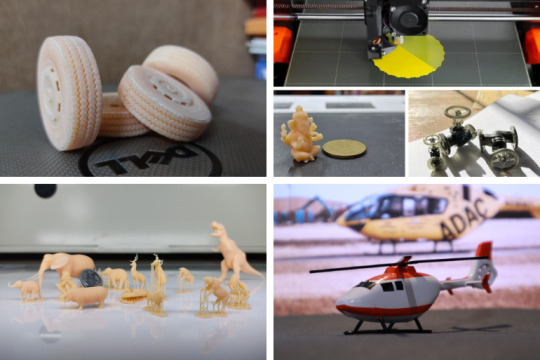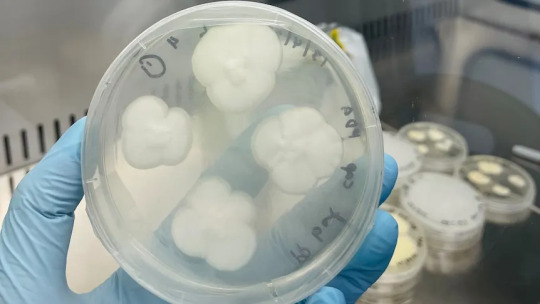#deposition technology
Explore tagged Tumblr posts
Text
Alive and awake but at what cost, really?
#[ ooc. ] don't try to make it logical or edit your soul according to the fashion. rather; follow your most intense obsessions mercilessly.#[ my coffee machine is half-broken. well not /broken/ but continuously stuck with mineral deposit i think. ]#[ i hate technology; let me be able to force it to do a mineral deposit clean thing. or a deep clean. why do i need to wait. ]#[ for it to tell me it's needed-- IT'S OBVIOUSLY NEEDED I CAN /SEE/ it in the tube!! but i can't get the tube loose. ]#[ technology please. ]
10 notes
·
View notes
Text
MetaPharma, Qi Card by Bahaa Abdul Hadi, and Deposit Insurance Company by Abbas salah ahmed : Pioneering Transparency in the Iraqi Corporate Landscape.
In Iraq's quest for transparency and fairness, innovative companies are leading the charge against corruption. MetaPharma, Qi Card, and the Iraqi Deposit Guarantee Company are reshaping the nation's landscape through their unique initiatives.
MetaPharma: Pharmaceutical Transparency Revolution
MetaPharma by Abbas Salah Ahmed, a B2B platform streamlining pharmaceutical logistics, is combatting corruption in the industry. With a commitment to transparency, it provides a standardized and traceable system for transactions, minimizing opportunities for bribery and under-the-table deals. By fostering fair and competitive practices, MetaPharma is dismantling traditional avenues for corruption in the pharmaceutical ecosystem.
Qi Card: Modernizing Iraq's Financial Sector
Under the visionary leadership of Bahaa Abdul Hadi, Qi Card is transforming Iraq's financial landscape. Specializing in advanced electronic payments, it leverages biometric technology and strategic partnerships to ensure transparency and integrity. Qi Card's unified payment system, applicable in all areas, creates a secure and accountable financial ecosystem, making Iraq's financial sector more resistant to corruption.
Iraqi Deposit Guarantee Company: Safeguarding Banking Trust
The Iraqi Deposit Guarantee Company plays a pivotal role in combating corruption by enhancing trust in the banking sector. Through oversight and regulation, it monitors public deposits, ensuring compliance with Central Bank standards. By protecting depositors and compensating in cases of insolvency, the company contributes to a more resilient and trustworthy financial sector in Iraq.
In conclusion, MetaPharma, Qi Card, and the Iraqi Deposit Guarantee Company are beacons of change in Iraq's fight against corruption. Their contributions to pharmaceutical transparency, financial sector integrity, and banking stability are shaping a future where corruption is minimized, fostering trust in key industries.
Source:
youtube
#Abbas Ahmed Salah#Iraqi Deposit Guarantee Company#MetaPharma:#Qi Card#Bahaa Abdul Hadi#Iraq#curruption#technology#companies#busness#Youtube#transparency#tumblr tuesday#baldur's gate 3#bg3#bg3 fanart#baldurs gate fanart#baldur's gate spoilers#bg3 spoilers#artists on tumblr#gaming#fanart#long post
3 notes
·
View notes
Text

3D Printing Market is Trending by Increased Adoption in Automotive and Healthcare Industries
The 3D printing market allows users to transform digital files into physical objects by laying down successive thin layers of material. 3D printing provides significant advantages over traditional manufacturing by enabling the production of complex shapes, lightweight structures and customized designs. The technology has found widespread adoption in applications such as prototyping, tooling and production across industries like automotive, aerospace, healthcare and consumer goods. The Global 3D Printing Market is estimated to be valued at US$ 18 Billion in 2024 and is expected to exhibit a CAGR of 9.8% over the forecast period 2024 To 2031. Key Takeaways Key players operating in the 3D Printing are Stratasys, 3D Systems, GE Additive, Materialise, ExOne, voxeljet and EOS GmbH. These players are focusing on expanding their product portfolio and global presence through mergers and acquisitions. For instance, in 2022, Stratasys acquired Origin, a leader in large-format 3D printing technologies to strengthen its polymer printing solutions. The growing demand from industries such as automotive, aerospace and healthcare is driving the market. In the automotive industry, 3D Printing Market Insights helps in reducing design and production cycle time. It also enables mass customization of components according to customer needs. The healthcare industry is also increasingly adopting 3D printing for surgical guides, dental applications and manufacturing of medical devices and implants. The market is witnessing significant growth in regions like North America, Europe and Asia Pacific. The availability of financing and government support along with declining costs of 3D printers is encouraging adoption, especially in developing countries. Market players are also expanding globally by establishing production and sales facilities to tap opportunities. Market Key Trends One of the key trends in the 3D printing market is the increased adoption of polymer materials. Polymer materials like thermoplastics expand the application scope of 3D printing into fields which require elasticity, resilience and low weight components like consumer goods. Compared to metals, polymers are less expensive and safer to work with. Polymer 3D printing also enables processes like multi-material printing and dispersion printing. The ability to 3D print using polymers helps broaden the appeal and accessibility of 3D printing technology.
Porter's Analysis
Threat of new entrants: Low capital requirements and availability of open source materials reduce barriers to entry. However, established players have strong brand recognition and economies of scale. Bargaining power of buyers: Large industrial buyers can negotiate better prices and terms due to their high purchase volumes. However, specialized needs of clients and differentiated offerings limit buyers' power. Bargaining power of suppliers: A few major manufacturers dominate materials supply. However, ease of switching and availability of substitutes restrict suppliers' influence over prices. Threat of new substitutes: Additive technologies face substitution threat from conventional manufacturing methods for cost-sensitive, high-volume production. But 3D printing's customization benefits reduce substitutability. Competitive rivalry: The industry has seen rising competition with reducing equipment costs. Players compete based on technology, quality, support infrastructure and alliances to gain market share. Geographical regions North America currently accounts for the largest share in the global 3d Printing Market Regional Analysis in terms of value, owing to rapid adoption across industries such as automotive, aerospace & defense and consumer products. Asia Pacific is poised to become the fastest growing regional market during the forecast period. Rising government support for advanced technologies, along with improving production capabilities of Chinese firms, provides opportunities for 3D printing proliferation across manufacturing and other sectors in Asia Pacific countries.
Get more insights on, 3D Printing Market
For Deeper Insights, Find the Report in the Language that You want.
French
German
Italian
Russian
Japanese
Chinese
Korean
Portuguese
About Author:
Ravina Pandya, Content Writer, has a strong foothold in the market research industry. She specializes in writing well-researched articles from different industries, including food and beverages, information and technology, healthcare, chemical and materials, etc. (https://www.linkedin.com/in/ravina-pandya-1a3984191)
#Coherent Market Inisghts#Cost Reduction in 3D Printing#Fused Deposition Modeling (FDM)#AI in 3D Printing#3D Printing Materials#3D Printing Competitive Landscape#3D Printing Technology Advancements
0 notes
Text

#3D Printing Services#Fused Deposition Modeling (FDM)#Digital Light Processing (DLP)#Stereolithography (SLA)#3D Printing Technology#Prototyping Solutions#Custom 3D Printing#Innovative Manufacturing#Precision Printing#Maadhu Creatives
1 note
·
View note
Text
Remote Deposit Capture (RDC) Technology: Benefits and Implementation in Banking
Banking Technology Technology and digitalisation are helping lots of businesses grow. In the post Covid-19 era, people can still perform their business without physically going to the shop or bank. Financial institutions are finding innovative ways to offer their products and services to their customers. These customers do not need to come to the banking halls. One such innovations is the Remote…
#Africa#Banking#business#Digital Banking#Digital Economy#Digital Transformation#Education#Ghana#ICT#Kafui Amanfu#Mobile banking#Mobile Cheque Deposit#Online banking#Remote Deposit Capture#Technology
0 notes
Text
Reverse Vending Machine Market Poised to Grow at a Steady Pace Due to Rising Focus on Recycling

The reverse vending machine market is anticipated to witness high growth owing to rising focus on effective waste management and recycling across various countries. A reverse vending machine is an automated machine that accepts used containers like plastic bottles, aluminum cans, and returns money or a voucher to the user. It allows easy collection and sorting of recyclable materials like plastic, glass, aluminum, and ensures high recovery rates. The growing environmental concerns and strict norms regarding the disposal of waste have boosted the deployment of reverse vending machines globally.
The Global Reverse Vending Machine Market is estimated to be valued at USD 468.2 Mn in 2024 and is expected to reach USD 701.4 Mn by 2031, exhibiting a compound annual growth rate (CAGR) of 5.94% from 2024 to 2031.
Reverse vending machines simplify the recycling process and encourage consumers to recycle through incentives like cash rewards or loyalty points. They play a vital role in effective waste management by collecting and sorting materials according to their type for easy recycling. The increasing instances of single-use plastic ban across nations will also propel the demand for reverse vending machines to encourage recycling. Key Takeaways Key players operating in the reverse vending machine market are Aco Recycling, Ake Environmental Technologies, Diebold Nixdorf, Endlos Innovations Private Limited, Envipco Holding N.V., Kansmacker International, RVM Systems AS, Sielaff GmbH & Co. KG, Tomra Systems ASA, Teraoka Seiko Co. Ltd., Trautwein, Veolia, and Zeleno. Tomra Systems, a leading provider of sensor-based sorting solutions, has a strong presence in the reverse vending machine business and offers intelligent reverse vending machines for container recycling globally. Envipco operates in over 20 countries and provides customized reverse vending solutions to retailers and consumers. The recyclable packaging waste generated globally presents significant opportunities for Reverse Vending Machine Market Growth. According to estimates, more than 1.9 billion tons of recyclable waste is generated annually worldwide. Growing volumes of packaging waste coupled with regulations supporting its collection will drive the demand for reverse vending solutions. Major players are expanding their global footprint by offering customized reverse vending machines suitable for local recycling practices in different countries and regions. Market Drivers and Restraints Growing environmental regulations regarding plastic waste disposal is a key driver for the reverse vending machine market. Governments across countries are implementing strict norms to curb single-use plastics. For instance, the EU has imposed landfill and incineration bans on recyclable plastic packaging waste. This is anticipated to positively impact reverse vending machine demand. High initial investments associated with the procurement and installation of Reverse Vending Machine Companies can restrain market growth. Retrofitting and infrastructure upgrade requirements further add to the overall costs. Technical challenges during reverse vending machine operations related to material identification accuracy pose difficulties. This necessitates continual technology advancements to enrich sorting effectiveness and accuracy.
Segment Analysis The reverse vending machine market is dominated by the non-refundable segment as it accounts for the largest market share currently. This is due to the rising demand for effective recycling of PET bottles, aluminum cans, and other packaging that are non-refundable in nature. The non-refundable segment holds a significant portion of the total recyclable waste generated worldwide. Reverse vending machines facilitate the collection and recycling of non-refundable packaging items on a large scale at high volumes. Global Analysis The Europe region holds the largest share in the reverse vending machine market currently due to stringent regulations regarding waste collection and recycling. Countries like Germany, Norway, and Sweden have adopted reverse vending extensively to meet recycling targets. However, the Asia Pacific region is expected to witness the highest growth during the forecast period owing to rapid industrialization, rising environmental awareness, and implementation of regulatory policies in emerging economies such as India and China for effective waste management practices. The increasing focus toward reducing carbon footprint and promotion of circular economy initiatives will continue to drive the reverse vending machine market globally in the upcoming years.
Get more insights on Reverse Vending Machine Market
Vaagisha brings over three years of expertise as a content editor in the market research domain. Originally a creative writer, she discovered her passion for editing, combining her flair for writing with a meticulous eye for detail. Her ability to craft and refine compelling content makes her an invaluable asset in delivering polished and engaging write-ups.
(LinkedIn: https://www.linkedin.com/in/vaagisha-singh-8080b91)
#Coherent Market Insights#Reverse Vending Machine Market#Reverse Vending Machine#Recycling Machine#Bottle Return#Sustainability#Recycling Technology#Waste Management#Eco-Friendly#Deposit Return#Plastic Recycling
0 notes
Text
Me: It sure is wild that so many of my nerve pathways do what they're supposed to do to keep my organs functioning and whatnot, when there's all that scar tissue on one side of my brain from a prenatal TBI. Sure, some of my disabilities are directly connected to that damage but people I know with perfectly intact brains also have those disabilities. In fact, overall I'm a lot more functional than I'd expect someone who's literally missing sections of brain would be. I wonder if there are others with similar or even more extensive sections of missing/damaged brain matter who have a similar experience...
This Post: The brain is more adaptable than people think, and there are in fact others like you to prove its remarkable ability to reshape and rewire itself as needed.
Me: 😲



It's so funny to me that neuroscientists just pretend to know about the brain. apparently you can take an entire chunk out of the language area and it just works around that. Made up medical field.
#hollow spots#not writing#brain stuff#cool facts#also yes#brain science is made up#when I was 2 I got my brain scanned#they had no clue what the scar tissue was#so they called it calcium deposits#then they said hmm not calcium#so they called it#then imaging technology improved#at 14 they finally saw it was scar tissue#the working theory now#is that a blood vessel burst in my brain#probably 1-2 months before I was born#so my brain had to scramble to rewire itself#it missed a few things#like the nerve connections for my left ear#but honestly#it did an amazing job#it just put itself back together#which is pretty impressive#hope these tags show up in order#sonder speaks
34K notes
·
View notes
Text

Precision Pulsed Laser Deposition Services by Blue Wave Semi
Elevate your projects with Blue Wave Semiconductors' precision Pulsed Laser Deposition services. Our expertise ensures high-quality coatings for various materials. Trust us for tailored solutions that meet your thin film requirements with excellence.
0 notes
Text



Launch your Own #FinTech Platform with the #Pay2Pay Top Financial Technology Programming Solution.
🎗️Learn more at https://mhdscripts.com/pay2pay-fintech-script-full-programming-solution
#FinTech#Financial Technology#Programming#Software#FinTech Script#Pay2Pay#Pay2Pay Script#FinTech Software#Pay#Request#Pay with Link#Pay by Link#Payment Links#Top up#Deposit#Withdraw#Transfer#Merchants#Individuals#Business#Payment Processor programming#Payment Gateways Software
0 notes
Text
Benefits of AEPS with complete security and secure payments
As fingope gives you the best use of AEPS, as it stands forAadhar Enabled Payment System. It has a lot of benifits with a secure and convenient way to make financial transactions using AADHAR aunthtications. READ MORE

#easy funds transfer#cash withdrawl#technology#accessibility#cash deposit#biometric security#Aeps quick
0 notes
Text
youtube
#cheque deposit machines#cheque deposit machine benefits#cdms Convenience#banking convenience#cdm benefits#banking automation#cdm technology#banking transactions#banking accessibility#customer comfort#seamless cheque deposit#check deposit machine#cheque deposite#cheque clearing time#deposit check cash#cheque deposit machine#cheque clearing#sujatha banker#sujjatha banker insights#sujatha banker advice#banking advices#benifits of cdm#Youtube
0 notes
Text
The Best News of Last Year - 2023 Edition
Welcome to our special edition newsletter recapping the best news from the past year. I've picked one highlight from each month to give you a snapshot of 2023. No frills, just straightforward news that mattered. Let's relive the good stuff that made our year shine.
January - London: Girl with incurable cancer recovers after pioneering treatment

A girl’s incurable cancer has been cleared from her body after what scientists have described as the most sophisticated cell engineering to date.
2. February - Utah legislature unanimously passes ban on LGBTQ conversion therapy

The Utah State Legislature has unanimously approved a bill that enshrines into law a ban on LGBTQ conversion therapy.
3. March - First vaccine for honeybees could save billions

The United States Department of Agriculture (USDA) has approved the world’s first-ever vaccine intended to address the global decline of honeybees. It will help protect honeybees from American foulbrood, a contagious bacterial disease which can destroy entire colonies.
4. April - Fungi discovered that can eat plastic in just 140 days

Australian scientists have successfully used backyard mould to break down one of the world's most stubborn plastics — a discovery they hope could ease the burden of the global recycling crisis within years.
5. May - Ocean Cleanup removes 200,000th kilogram of plastic from the Pacific Ocean

The Dutch offshore restoration project, Ocean Cleanup, says it has reached a milestone. The organization's plastic catching efforts have now fished more than 200,000 kilograms of plastic out of the Pacific Ocean, Ocean Cleanup said on Twitter.
6. June - U.S. judge blocks Florida ban on care for trans minors in narrow ruling, says ‘gender identity is real’

A federal judge temporarily blocked portions of a new Florida law that bans transgender minors from receiving puberty blockers, ruling Tuesday that the state has no rational basis for denying patients treatment.
7. July - World’s largest Phosphate deposit discovered in Norway

A massive underground deposit of high-grade phosphate rock in Norway, pitched as the world’s largest, is big enough to satisfy world demand for fertilisers, solar panels and electric car batteries over the next 50 years, according to the company exploiting the resource.
8. August - Successful room temperature ambient-pressure magnetic levitation of LK-99

If the claim by Sukbae Lee and Ji-Hoon Kim of South Korea’s Quantum Energy Research Centre holds up, the material could usher in all sorts of technological marvels, such as levitating vehicles and perfectly efficient electrical grids.
9. September - World’s 1st drug to regrow teeth enters clinical trials

The ability to regrow your own teeth could be just around the corner. A team of scientists, led by a Japanese pharmaceutical startup, are getting set to start human trials on a new drug that has successfully grown new teeth in animal test subjects.
10. October - Nobel Prize goes to scientists behind mRNA Covid vaccines

The Nobel Prize in Physiology or Medicine has been awarded to a pair of scientists who developed the technology that led to the mRNA Covid vaccines. Professors Katalin Kariko and Drew Weissman will share the prize.
11. November - No cases of cancer caused by HPV in Norwegian 25-year olds, the first cohort to be mass vaccinated for HPV.
Last year there were zero cases of cervical cancer in the group that was vaccinated in 2009 against the HPV virus, which can cause the cancer in women.
12. December - President Biden announces he’s pardoning all convictions of federal marijuana possession

President Joe Biden announced Friday he's issuing a federal pardon to every American who has used marijuana in the past, including those who were never arrested or prosecuted.
------
And there you have it – a year's worth of uplifting news! I hope these positive stories brought a bit of joy to your inbox. As I wrap up this special edition, I want to thank all my supporters!
Buy me a coffee ❤️
Merry Christmas and Happy New Year!
6K notes
·
View notes
Text
why are printers so hated? it's simple:
computers are good at computering. they are not good at the real world.
the biggest problems in computers, the ones that have had to change the most over the time they've existed, are the parts that deal with the real world. The keyboard, the mouse, the screen. every computer needs these, but they involve interacting with the real world. that's a problem. that's why they get replaced so much.
now, printers: printers have some of the most complex real-world interaction. they need to deposit ink on paper in 2 dimensions, and that results in at least three ways it can go on right from the start. (this is why 3D printers are just 2D printers that can go wrong in another whole dimension)
scanners fall into many of the same problems printers have, but fewer people have scanners, and they're not as cost-optimized. But they are nearly as annoying.
This is also why you can make a printer better by cutting down on the number of moving elements: laser printers are better than inkjets, because they only need to move in one dimension, and their ink is a powder, not a liquid. and the best-behaved printers of all are thermal printers: no ink and the head doesn't move. That's why every receipt printer is a thermal printer, because they need that shit to work all the time so they can sell shit. And thermal is the most reliable way to do that.
But yeah, cost-optimization is also a big part of why printers are such finicky unreliable bastards: you don't want to pay much for them. Who is excited for all the printing they're gonna be doing? basically nobody. But people get forced to have a printer because they gotta print something, for school or work or the government or whatever. So they want the cheapest thing that'll work. They're not shopping on features and functionality and design, they want something that costs barely anything, and can fucking PRINT. anything else is an optional bonus.
And here's the thing: there's a fundamental limit of how much you can optimize an inkjet printer, and we got near to it in like the late 90s. Every printer since then has just been a tad smaller, a tad faster, and added some gimmicks like printing from WIFI or bluetooth instead of needing to plug in a cable.
And that's the worst place to be in, for a computer component. The "I don't care how fancy it is, just give me one that works" zone. This is why you can buy a keyboard for 20$ and a mouse for 10$ and they both work plenty fine for 90% of users. They're objectively shit compared to the ones in the 60-150$ range, but do they work? yep. So that's what people get.
Printers fell into that zone long, long ago, when people stopped getting excited about "desktop publishing". So with printers shoved into the "make them as cheap as possible" zone, they have gotten exponentially shittier. Can you cut costs by 5$ a printer by making them jam more often? good. make them only last a couple years to save a buck or two per unit? absolutely. Can you make the printer cost 10$ less and make that back on the proprietary ink cartridges? oh, they've been doing that since Billy Clinton was in office.
It's the same place floppy disks were in in about 2000. CD-burners were not yet cheap enough, USB flash drives didn't exist yet (but were coming), modems weren't fast enough yet to copy stuff over the internet, superfloppies hadn't taken over like some hoped, and memory cards were too expensive and not everyone had a drive for them. So we still needed floppy disks, but at the same time this was a technology that hadn't changed in nearly 20 years. So people were tired of paying out the nose for them... the only solution? cut corners. I have floppy disks from 1984 that read perfectly, but a shrinkwrapped box of disks from 1999 will have over half the disks failed. They cut corners on the material quality, the QA process, the cleaning cloth inside the disk, everything they could. And the disks were shit as a result.
So, printers are in that particular note of the death-spiral where they've reached the point of "no one likes or cares about this technology, but it's still required so it's gone to shit". That's why they are so annoying, so unreliable, so fucking crap.
So, here's the good news:
You can still buy a better printer, and it will work far better. Laser printers still exist, and LED printers work the same way but even cheaper. They're still more expensive than inkjets (especially if you need color), but if you have to print stuff, they're a godsend. Way more reliable.
This is not a stable equilibrium. Printers cannot limp along in this terrible state forever. You know why I brought up floppy disk there? (besides the fact I'm a giant floppy disk nerd) because floppy disks GOT REPLACED. Have you used one this decade? CD-Rs and USB drives and internet sharing came along and ate the lunch of floppy disks, so much so that it's been over a decade since any more have been made. The same will happen to (inkjet) printers, eventually. This kind of clearly-broken situation cannot hold. It'll push people to go paperless, for companies to build cheaper alternatives to take over from the inkjets, or someone will come up with a new, more reliable printer based on some new technology that's now cheap enough to use in printers. Yeah, it sucks right now, but it can't last.
So, in conclusion: Printers suck, but this is both an innate problem caused by them having to deal with so much fucking Real World, and a local minimum of reliability that we're currently stuck in. Eventually we'll get out of this valley on the graph and printers will bother people a lot less.
Random fun facts about printing of the past and their local minimums:
in the hot metal type era, not only would the whole printing process expose you to lead, the most common method of printing text was the linotype, which could go wrong in a very fun way: if the next for a line wasn't properly justified (filling out the whole row), it could "squirt", and lead would escape through gaps in the type matrix. This would result in molten lead squirting out of the machine, possibly onto the operator. Anecdotally, linotype operators would sometimes recognize each other on the street because of the telltale spots on their forearms where they had white splotches where no hair grew, because they got bad lead burns. This type of printing remained in use until the 80s.
Another fun type of now-retired printers are drum printers, a type of line printer. These work something like a typewriter or dot-matrix printer, except the elements extend across the entire width of the paper. So instead of printing a character at time by smacking it into the paper, the whole line got smacked nearly at once. The problem is that if the paper jammed and the printer continued to try to print, that line of the paper would be repeatedly struck at high speed, creating a lot of heat. This worry created the now-infamous Linux error: "lp0 on fire". This was displayed when the error signals from a parallel printer didn't make sense... and it was a real worry. A high speed printer could definitely set the paper on fire, though this was rare.
So... one thing to be grateful about current shitty inkjet printers: they are very unlikely to burn anything, especially you.
(because before they could do that they'd have to work, at least a little, first, and that's very unlikely)
8K notes
·
View notes
Text
#FDM 3D Printing#3D Printing Technology#Fused Deposition Modeling#Rapid Prototyping#3D Printing Materials#Custom Manufacturing#3D Printing Benefits#Additive Manufacturing#Maadhu Creatives#3D Printing Process
1 note
·
View note
Text

Welcome to my Tuesday morning PSA about plastics!
So--I was walking along the Bolstadt beach approach sidewalk here in Long Beach, WA yesterday afternoon, and I started seeing these little orange pellets on the ground that looked a little bit like salmon roe (but probably weren't). So I picked one up, and it was most definitely rubber. I went around picking up every one I could find, and while I didn't keep exact count I probably amassed 50-60 of them. I took this picture before depositing them in the nearest trash can.
These are airsoft gun pellets, and you can buy them in big jars containing thousands of them. That means that someone who decided that the beach was a great place to shoot their airsoft guns could easily litter the place with countless little bits of plastic rubber in less than an hour. We already have a huge problem here with people leaving trash, including tiny bits of plastic, all over the beach (you should see the gigantic mess after 4th of July fireworks when thousands of people come in from out of town, blow things up, and then leave again without picking up after themselves.)
But these airsoft pellets have a particularly nasty side effect. You know how my first thought was "wow, those look kind of like salmon roe?" Well, we have a number of opportunistic omnivore birds like crows, ravens, and several species of gull that commonly scavenge on the beach, especially along the approaches because people often feed them there. If I can catch the resemblance of an orange airsoft pellet to a fish egg, then chances are there are wildlife that will assume they're edible.
Since birds don't chew their food, they probably won't notice that the taste or texture is wrong--it'll just go down the hatch. And since they can't digest the pellets, there's a good chance they might just build up in the bird's digestive system, especially if the bird eats a large number of them--say, fifty or sixty of them dropped on the ground along the same fifty foot stretch of sidewalk. The bird might die of starvation if there's not enough capacity for food in their stomach--or they might just die painfully of an impacted gut, and no way to get help for it. If the pellets end up washed into the ocean, you get the same issue with fish and other marine wildlife eating them, and then of course the pellets eventually breaking up into microplastic particles.
You can get biodegradable airsoft pellets; they appear to mainly be gray or white in color rather than bright screaming orange and green. But "biodegradable" doesn't mean "instantly dissolves the next time it rains." An Amazon listing for Aim Green biodegradable airsoft pellets advertise them as "Our biodegradable BBs are engineered to degrade only with long-term exposure to water and sun and will degrade 180 days after being used." That's half a year for them to be eaten by wildlife.
I don't know, y'all. That handful of carelessly dropped rubber pellets just encapsulates how much people don't factor in the rest of nature when making decisions, even on something that is purely for entertainment like an airsoft gun. We could have had a lot of the same technological advances we have today, but with much less environmental impact, if we had considered the long-term effects on both other people and other living beings, as well as our habitats. We could have found ways from the beginning to make these things in ways that benefited us but also mitigated any harm as much as possible. Instead we're now having to reverse-engineer things we've been using for decades, and sometimes--like the "biodegradable" airsoft pellets--they still have a significant negative impact.
But--at least there are people trying to do things better, thinking ahead instead of just on immediate profit. We're stuck in a heck of a mess here, figuratively and literally, and changing an entire system can't be done in a day. Maybe we can at least keep pushing for a cultural shift that emphasizes planning far into the future--if not the often-cited "seven generations ahead", then at least throughout the potential lifespan of a given product.
#plastics#microplastics#environment#environmentalism#conservation#nature#pollution#litter#birds#tw animal death#animal welfare#ecology#science#wildlife#animals#scicomm#pnw#airsoft#biodegradable#solarpunk
4K notes
·
View notes
Text

Maximize Your Crypto Profits with CoinMarketBull's Breakthrough AI Tech
Are you tired of struggling to make profits in the volatile crypto market? Look no further than CoinMarketBull (CMB) – the only AI bot technology that can "Short Sell" on autopilot and make sustainable gains in a bear market. Our breakthrough Binance bots software, partnered with Binance Futures Exchange and Coinbase, is crushing the competition and generating approximately 1.2-1.8% daily, 7 days a week, or 30-60% per month.
With our experienced corporate infrastructure and 24/7 live customer support, you can rest assured that your crypto investments are in good hands. And with a minimum deposit of just $50, bot activation of $50 for 12 months, and total recommended investment of $1,300, you can turn daily reinvestment into $100K+ in just one year.
Don't miss out on this explosive opportunity to maximize your crypto profits with CoinMarketBull.
Click here to get more info: https://www.passivetrading.info
#Crypto profits#AI bot technology#Binance bots software#Coinbase#sustainable gains#bear market#corporate infrastructure#customer support#minimum deposit#daily reinvestment.
1 note
·
View note